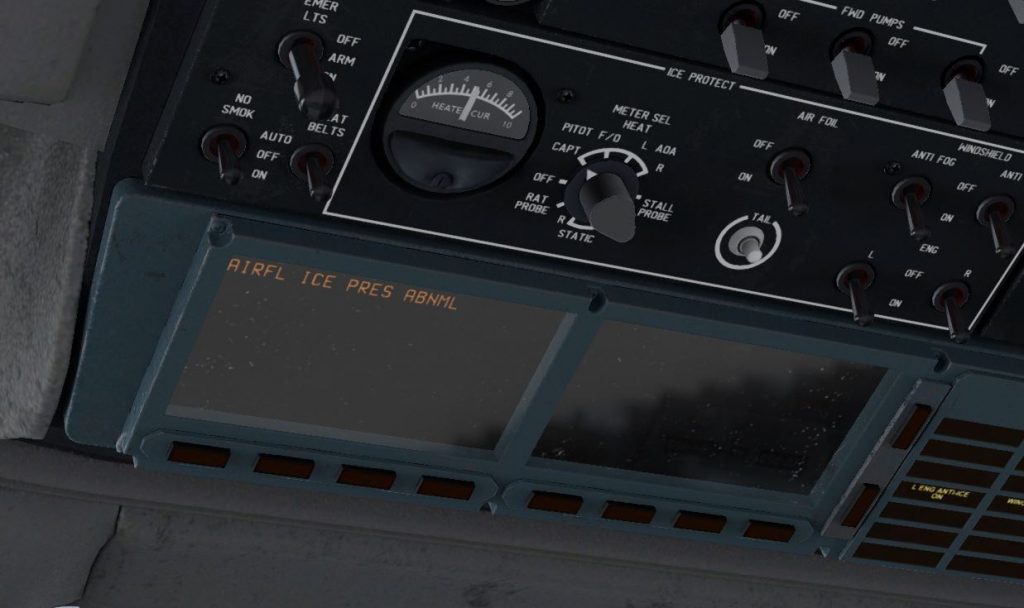I know some people prefer crushed ice… the little pellet sized pieces that cool your drink to an almost frozen temperature. For me… I prefer cubed ice, mainly because I think it doesn’t “water-down” your drink as fast as with crushed ice… I still like cold drinks cold, mind you! But when it comes to aviation, whether real life or simulated, flying aircraft and ice don’t mix. Most modern airliners, commercially operated aircraft and even some general aviation aircraft come equipped with anti-ice systems that help prevent the buildup of drag-creating, weight-adding ice. And most pilots I know go out of their way to avoid icing conditions, or at least climb above or descend through them as quickly as possible.
The other day I was attempting a simulated flight into Toronto, CYYZ, with below freezing temperatures and lots of storms and precipitation in the area. I was flying the Rotate MD-80 in X-Plane, on the VATSIM network with a friend, and as it turned out, I was going to be the first one on the approach. While flying level, just above the clouds and precipitation at 8,000 feet, I hear over the virtual radio the controller issue the instruction, “Descend and maintain 6000 feet.” I repeated the instruction. I thought to myself, “Here we go” with a bit of nervousness. I had just noticed in the MD-80 annunciator display the text “AIRFL ICE PRESS ABNML.” Hmm… I don’t remember seeing that before as I confirmed I had enabled the anti-icing system.

As I descended into clouds, rain and freezing temperatures, I made some last efforts, as best I knew how, to get the anti-icing system enabled and happy. No luck. Is it working? Is it working enough? Moments later, in less than a minute, the simulated flight in the MD-80 went from smooth and planned, to a stall and spin into the ground from about 6500 feet above metropolitan Toronto. As soon as I noticed the airspeed dropping, I pushed the throttles to full and did everything I could to keep the MadDog in the air, but to no avail. I called on the virtual radio, “Ut oh… looks like the weather got me!” and the simulated flight was over.
The moral of the story… there are certain systems in the plane that need to be configured properly to make sure the anti-ice system is working correctly and to its maximum effectiveness. It’s not just a matter of flipping ONE switch… which brings me to my last point.
I really enjoy learning about such a complex machine such as the MD-80, and all the systems that come together to make it possible to fly fast and far, with a lot of people and cargo. Flight simulators like X-Plane are a perfect platform for this kind of thing. Experiencing a simulated crash definitely got my attention… as in… there’s something here I don’t understand and I’m looking forward to learning what went wrong and how to fix it. So into the flight manual and POH I went and I uncovered a few items such as pneumatic x-feeds, minimum N1 values, and a few other important details. I don’t think understand everything just yet, but I’ve really enjoyed learning about the “not-so-glamorous” anti-ice system. These situations and simulations continue to be a great learning tool for discovering how to deal with what turned out for me to be a “simulated” deadly circumstance. A big thank-you goes to the team at Laminar Research and also the people behind the Rotate MD-80 for the realistic simulation. The education continues! Crushed ice might have a new meaning for me… and I think I’ll stick with “Cubed.”